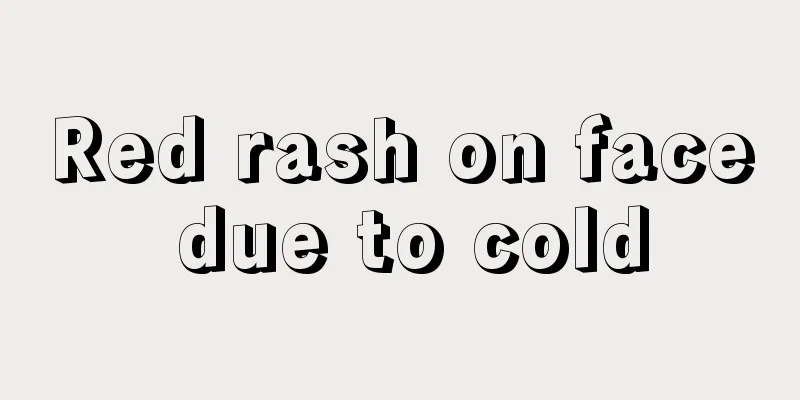Are peaches cold in nature?

|
When you eat peaches, you will feel that they are very juicy, sweet and crispy. This is why many people love to eat peaches. However, when eating them, people always worry that peaches are cold fruits. Eating too much can cause gastrointestinal discomfort. However, this fruit is not cold in nature and can be processed and used as a very common Chinese medicinal material. The gum secreted from the trunk of peach tree, commonly known as peach gum, can be used as an adhesive, etc. It is a polysaccharide substance which can be hydrolyzed to produce arabinose, galactose, xylose, rhamnose, glucuronic acid, etc. It is edible and can also be used for medicinal purposes. It has the effects of breaking blood, harmonizing blood, and invigorating qi. [1] Nutrition Peaches are known as "longevity peaches" and "fairy peaches". Because of their delicious flesh, they are also called "the best fruit in the world". Peach flesh contains protein, fat, carbohydrates, crude fiber, calcium, phosphorus, iron, carotene, vitamin B1, as well as organic acids (mainly malic acid and citric acid), sugars (mainly glucose, fructose, sucrose, xylose) and volatile oils. Every 100 grams of fresh peaches contains 88% water, about 0.7 grams of protein, 11 grams of carbohydrates, and only 180.0 kilojoules of calories. Peaches are suitable for patients with hypokalemia and iron deficiency anemia. [6] edible The gum secreted from the trunk of peach trees, commonly known as peach gum, can be used as an adhesive, etc. It is a polysaccharide substance that can be produced by hydrolysis. Arabinose, galactose, xylose, rhamnose, glucuronic acid, etc. are edible and can also be used for medicinal purposes. They have the effects of breaking blood, harmonizing blood, and invigorating qi. [2] Practice guidance 1. Eat fresh, make into jerky, or boil it into juice and drink the soup while eating the meat. 2. Wash the peach hairs before eating to prevent them from piercing the skin and causing rash; or being inhaled into the respiratory tract and causing coughing, itchy throat, etc. [7] Eating tips 1. How to remove peach fuzz: Put a little edible alkali in clean water, soak the fresh peaches for 3 minutes, stir a few times, the peach fuzz will automatically float up, and the fuzz will be gone after a few washes. 2. Choosing peaches: Touch them with your hand. If the surface is hairy and tingling, it means they have not been watered. If it is of moderate hardness and does not release water when pressed with a little force, it is a good choice. If it is too soft, it will rot easily. Red peaches are not necessarily sweet. Don’t buy peaches with the pit and flesh separated. The flesh will be sweeter if the pit and flesh are stuck together. medicine [Dai medicine] Mahuang: The stems and wood are used for wind diseases and stomachaches. "Dai Medicine". Ma Kuang, Ma Huang: The stems and wood can cure all wind diseases and stomachache "Yunnan Medicine Records", "Dai Medicine", and "Yunnan Provincial Records". [Tibetan medicine] Kanbu Rouxia: The seeds are used to treat blood stasis, amenorrhea, blood accumulation in abdominal masses, bruises, and constipation due to dry intestines (Tibetan Standards). Kangbu is hot and cold: its seeds can treat lumps in the body. "Qinghai-Tibet Medicinal Mirror" Kambureha: The flowers, young fruits and seeds are used to treat sores, carbuncles, jaundice and tribal disease. Applying peach kernel oil can treat baldness "Chinese Tibetan Medicine". Kangbu: The seeds can treat lumps in the body (pregnant women should avoid using it); the flowers can treat ascites and edema; the leaves can treat eczema, hemorrhoids, and head lice (Tibetan Materia Medica). [Mongolian medicine] Taorunyichumo: The seeds are used to treat amenorrhea, dysmenorrhea, abdominal lumps, injuries from falls, and constipation due to dry intestines; the leaves are used to treat malaria, carbuncles, hemorrhoids, eczema, and vaginal trichomoniasis. "Mongolian medicine". [Uyghur medicine] Peach leaves are used to treat wind-heat, cold and cough. [Chaoyao] Peach: Young branches with leaves are used to treat eczema. "Illustrated Chaoyao" [Yi Medicine] Peach, Mountain Peach, Siou: Leaves, flowers or gum are used to treat sores, boils, abscesses, pain caused by roundworms, abdominal distension, edema, emaciation in women, toothache, malaria, rubella, and cough. "Yi Plant Medicine". The leaves are used for urine retention caused by damp heat and edema caused by kidney disease (Ailao). Awei Ze Ri (parasitic on peach tree): The whole plant is used for gynecological adnexitis and infertility (Yunnan Province Chronicles). |
<<: Is cucumber cold in nature?
>>: Are river crabs cold in nature?
Recommend
What is the best way to prevent liver cancer? You can eat these four types of food
Eating more bean sprouts, kelp, onions and purple...
What is the recurrence rate of lymphoma
With the great improvement of lymphoma treatment,...
The difference between suspended moxibustion and moxibustion
The difference between suspended moxibustion and ...
Early symptoms of metastatic brain cancer
Metastatic liver cancer is a disease in which a p...
What is the hamartoma in the kidney?
Renal hamartoma is a common benign tumor, mainly ...
How to remove formaldehyde from mattress
In daily life, formaldehyde is not easy for us to...
What are the diets for preventing colorectal cancer
The incidence of colorectal cancer will continue ...
What harm does skin cancer do to the body
The importance of skin to us is self-evident. Man...
A good way to memorize quickly
For students, we need to learn a lot of knowledge...
Introduction to Korean massage techniques
Massage is a favorite choice of many people. Mass...
How to prevent bronchitis
Bronchitis is one of the more common respiratory ...
My hands feel weak after waking up
What is the reason for weak hands after waking up...
What are the treatments for liver cancer? Eating two types of food frequently can easily induce liver cancer
Although liver cancer is not contagious, it can a...
How can teenagers improve their memory?
Teenagers all hope that they can have a good memo...
Why does fermented glutinous rice turn sour?
Many people like to eat Laozao, especially childr...









